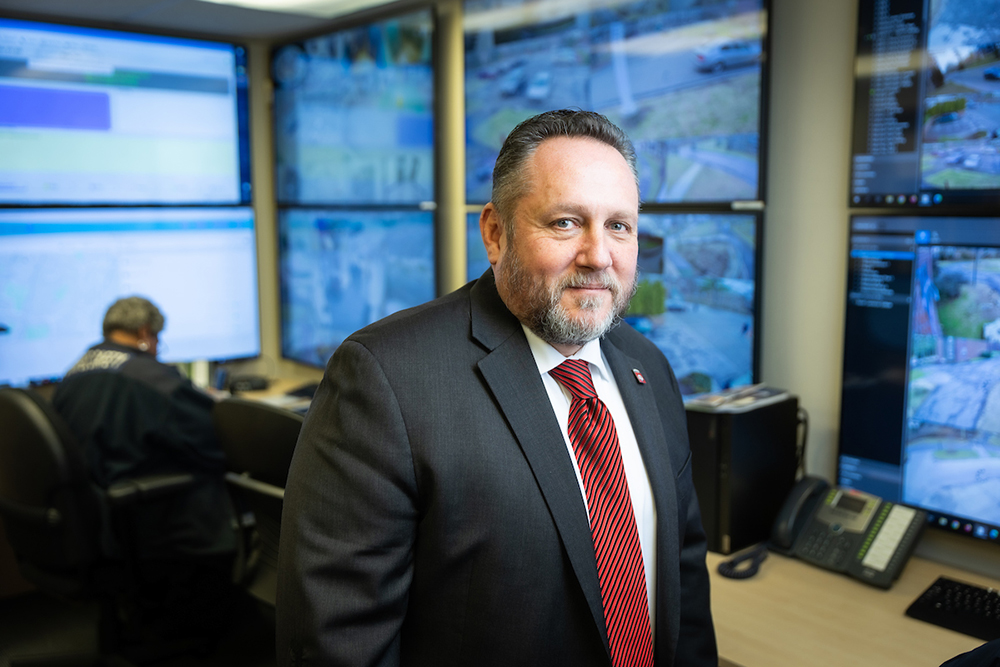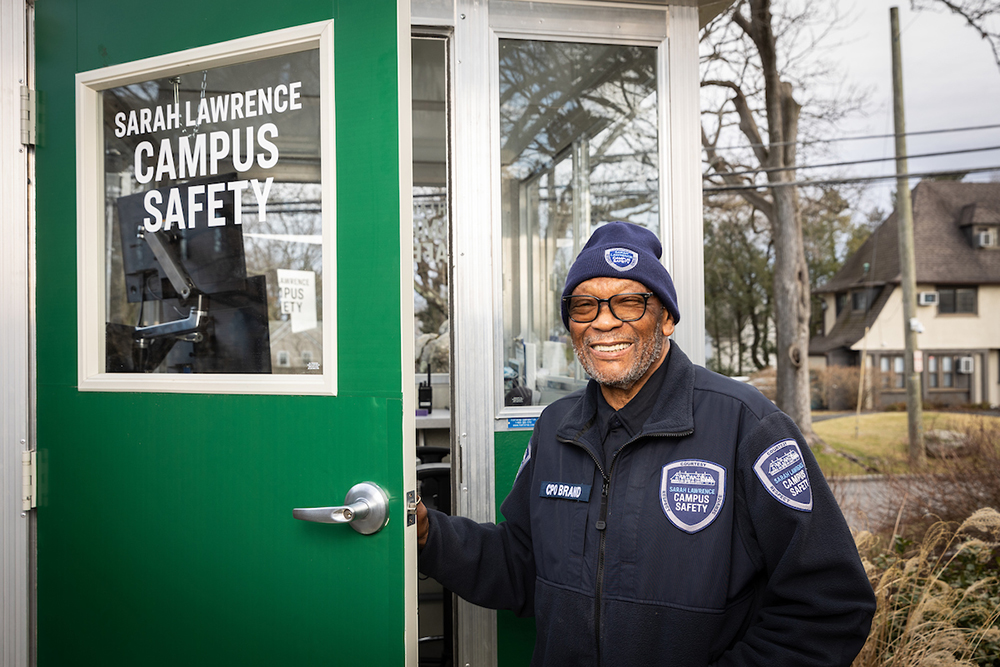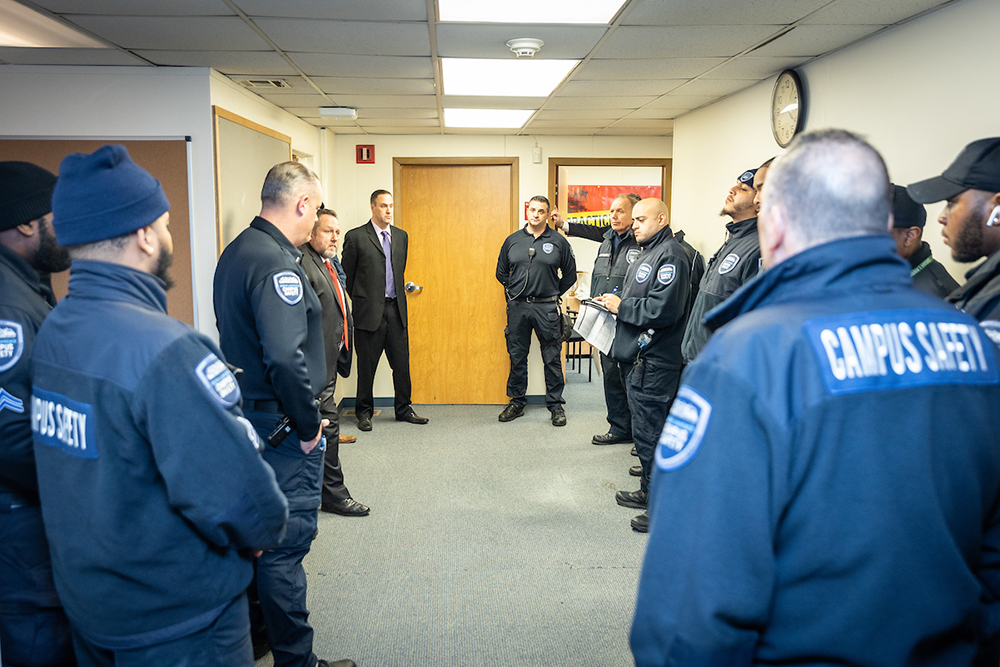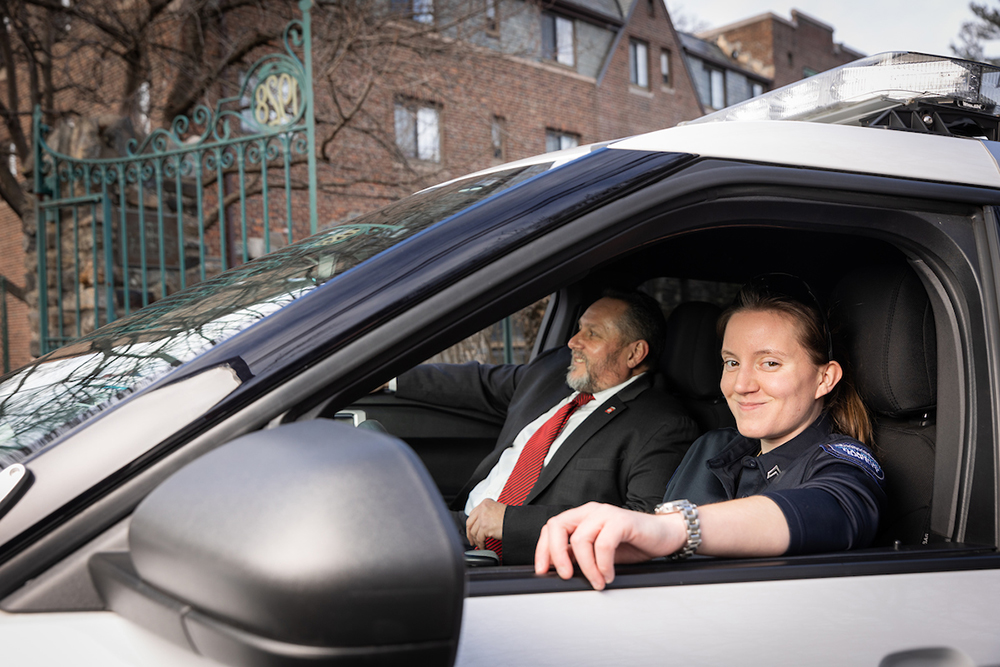
Pickup basketball, cookouts, and meet and greets are a far cry from what one would associate with campus safety. But these activities are a critical element to the Sarah Lawrence College Office of Campus Safety program.
“A successful campus safety program begins with community building,” says Jim Verdicchio, Assistant Vice President of Campus Safety. “It’s about relationship building. If people need to contact us there needs to be a level of trust. We want the students to see us as people.”
A Brief History of Campus Safety
Campus safety in the modern era has a very different face than it did when the idea first came about. Yale became the first U.S. institution to implement a campus safety team in the late 19th century, after receiving a mandate to build good relations with students and the college community. But then, interest in campus safety waned until the 1920s, which saw a renewed interest in campus safety. Higher education institutions began hiring retired police officers to do the job following a more watchguard, or reactive, philosophy. The riots and protests of the 1950s and 1960s saw the role of the campus safety office evolve from being solely a police force to one that incorporated an overall safety-first approach.
Today, college campuses view the role of the campus safety office as a concept that goes beyond traditional policing and as an office that manages overall safety and wellbeing with services that include fire safety, emergency medical response, traditional security issues, emergency management, and environmental health and safety education. “Most calls are for service and not crimes, which is what you want. It’s a balance and it is dynamic,“ says Verdicchio.

A Comprehensive Approach to Campus Safety
Verdicchio’s approach to campus safety focuses on a community engagement and all-hazard preparedness public safety model. “I implement proactive measures to protect the community,” he says. He’s invited the Yonkers Community Affairs team to campus to lead a drug awareness program and Saint Joseph’s Medical Center to provide Narcan training to Campus Safety officers and any students that are interested. The Campus Safety office also offers free CPR and AED trainings, classes on non-violent interventions, and fire safety and active shooter drills, and is constantly evaluating new opportunities for the community. “If a student has an idea for a program they’d like to see, we’re willing to look at it. Our goal is to get students, staff, and faculty to become stewards of their own safety.”

A Multifaceted Team Reflective of Today’s Student Body
Verdicchio’s career in public safety and security began at New York-Presbyterian Hospital in the early 1990s. He was recruited by Columbia University to work as their senior investigator, and was the assistant director of investigations and technology projects in the Department of Public Safety by the time he left. He came to Sarah Lawrence in 2019 by way of Bronx Community College where he was the Chief of Campus Public Safety for eight years, and also taught criminal justice classes. “Classical models of policing do not work on campuses,” says Verdicchio. “My approach focuses on community building and creating safe spaces for students to share.”
Thanks in part to his military background—he was a sergeant in the 82nd Airborne Division—Verdicchio runs a tight ship. The campus safety team receives briefings every eight hours and participates in a daily roll call. These reports are shared to the relevant teams in real time. Among Verdicchio’s other improvements are a command center that allows for a real time view into all the public spaces around campus, clearly marked vehicles to show outsiders that there is a campus safety presence, relationship building with the Yonkers Police Department, and ensuring that his staff is as diverse as the student body they are there to assist.
Verdicchio regularly holds training sessions for his officers that are reflective of the diverse needs of the student body. These trainings promote respect, diversity, equity, and inclusion, and include implicit bias training, workplace climate training, procedural justice, ethical training, campus community policing philosophy, non-violent crisis intervention, and racial diversity. “We must be sensitive and empathetic to the needs of our students. I make sure we are not only current on our trainings, but also that I have a diverse mix of officers on duty at any time. A student is more likely to reach out for assistance if they feel comfortable talking to someone that elicits a level of trust.”

Verdicchio recognizes that there is a vulnerability that comes with being a college student and that his office needs to stay current on trends, news, and what’s happening in the hyperlocal community. “Education on the part of the Campus Safety office is continuous. And community engagement is ongoing. I expect to be challenged if we don’t do something right.”
And, to Verdicchio’s credit, he recognizes that the community extends beyond the on-campus population and includes parents and family members, too. “I get to meet with people during Family & Friends Weekend and it’s great to hear straight from them how much they like the shuttle service or appreciate our team checking on their kids for them.”
In all they do, Verdicchio and the Campus Safety team remain mindful of one thing: the students are the priority. When Campus Safety successfully meets the needs of students, students can spend their time focusing on what’s most important: connecting their passions to create their best futures.